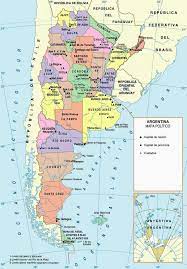The federal government of Argentina will conduct a comprehensive survey of a portfolio of 21 hydroelectric power stations that have concessions scheduled to expire between 2022 and 2029, according to BNamericas.

The bulk of these concessions expire within the next four years. Another is due to end in 2044. The plants have combined installed capacity of 5.8 GW – around half of Argentina’s hydroelectric capacity of 10.8 GW. Argentina’s total installed power generation capacity stood at around 43 GW last year.
Officials from the federal energy department, the electric power subdepartment, wholesale power market administrator Cammesa, power regulator Enre and state energy company IEASA will establish a group to carry out the work. They will focus first on those due to end in 2023, the federal energy department said in a statement. The reports will provide information on the technical, economic, legal and environmental aspects of the plants.
The two chief possible outcomes are the government granting concession extensions or taking over control of the plants.
The provinces of Neuquén and Río Negro are also sharpening their focus on several concessions, namely plants on the Limay and Neuquén border rivers. Authorities will present the federal government with a proposal, the provinces have said.
The provinces say they have “ratified the convenience and need to intervene in everything related to the administration, operation, maintenance, commercial usage and conservation of hydroelectric facilities.”
Set to expire in 2023 are operating concessions awarded by the federal government for 1,320 MW El Chocón-Arroyito, 1,400 MW Piedra del Águila, 1,000 MW Alicurá and 450 MW Planicie Banderita. Enel Argentina operates the Chocón-Arroyito complex, Central Puerto operates Piedra del Águila, AES Argentina is operator of Alicurá, and Orazul Energy Argentina operates the Planicie Banderita plant at the Cerros Colorados complex.
Hydroelectric output in the country has been trending down since at least 2006, according to Cammesa data. As drought conditions impact water levels, hydroelectric plants produced 24.116 TWh of electricity in 2021, down from 29.093 TWh in 2020 and 35.370 TWh in 2019. In contrast thermoelectric generation was 90.073 TWh last year, up from 82.336 TWh in 2020 and 80.127 TWh in 2019.
